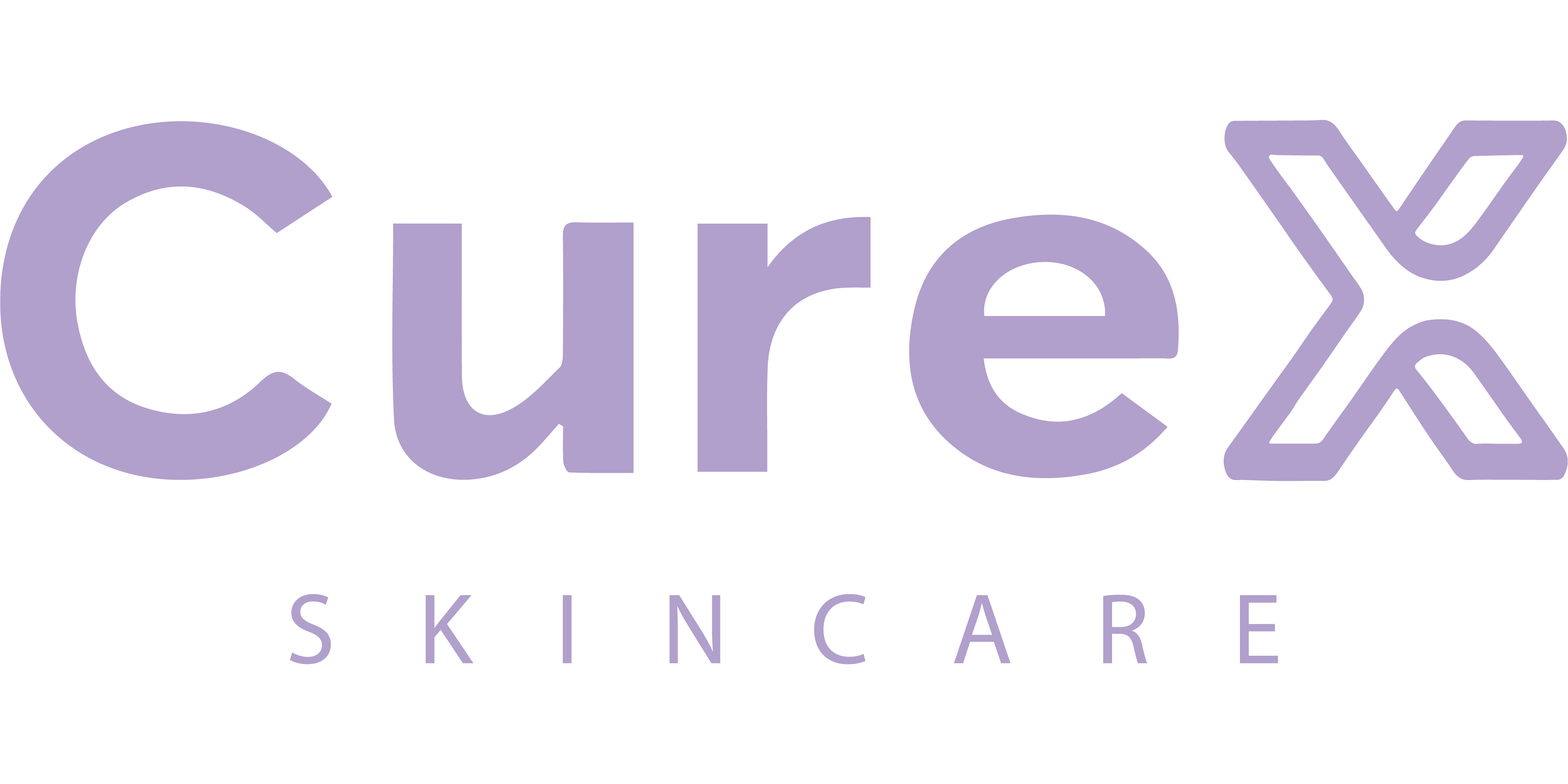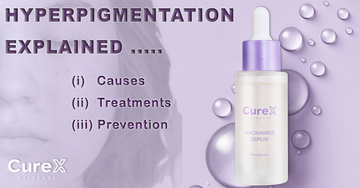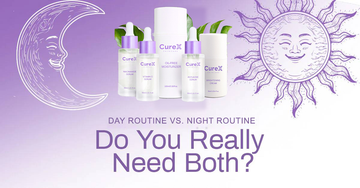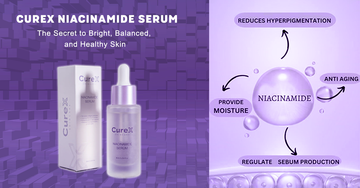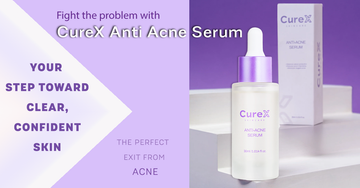Hyperpigmentation Explained: Causes, Treatments, and Prevention
Table of Contents
- Introduction
- What Exactly Is Hyperpigmentation?
- Why Does Hyperpigmentation Happen?
- Types of Hyperpigmentation
- How to Treat Hyperpigmentation (The Right Way)
- How to Prevent Hyperpigmentation from Coming Back
- CureX Skincare Routine for Hyperpigmentation
- Frequently Asked Questions (FAQs)
- Final Thoughts
Have you ever noticed dark spots or uneven patches on your skin that just won’t go away? You’re not alone — hyperpigmentation is one of the most common skin concerns people in Pakistan face. It’s not harmful, but it can definitely make you feel less confident about your skin. The good news? With the right care and consistency, you can fade those spots and bring your natural glow back.
Let’s break down what hyperpigmentation really is, what causes it, and how CureX Skincare can help you treat and prevent it effectively.
What Exactly Is Hyperpigmentation?
Hyperpigmentation happens when your skin produces too much melanin — the pigment that gives your skin its color. When that pigment becomes uneven, you end up with dark spots, patches, or uneven tone.
While it can show up on any skin type, it’s more common in warmer climates (like ours in Pakistan), where sunlight is strong almost all year round.
Why Does Hyperpigmentation Happen?
There isn’t just one cause — a few common ones include:
1. Too Much Sun Exposure
UV rays are the number one reason people develop pigmentation. The sun triggers your skin to make extra melanin for protection, but that extra pigment can form dark spots over time. That’s why daily sunblock — like CureX Sebum Control SPF 40 or CureX Tinted Sunblock SPF 60 — is absolutely essential.
2. Acne and Skin Inflammation
If you’ve ever had a breakout that left a dark mark behind, that’s called post-inflammatory hyperpigmentation (PIH). It’s super common and completely treatable with the right serums.
3. Hormonal Changes
Hormones can trigger melasma, which looks like brown patches across the cheeks or forehead. It’s often linked to pregnancy or birth control, and can take longer to fade.
4. Skin Injuries
Even small cuts or burns can leave behind dark marks if you’re not careful with healing.
5. Harsh Skincare Products
Over-exfoliating or using products with alcohol and bleach can irritate your skin and make pigmentation worse instead of better.
Types of Hyperpigmentation
Sunspots (Lentigines): Caused by sun exposure — those tiny dark freckles you notice after beach days.
Melasma: Hormonal pigmentation that spreads symmetrically across your face.
Post-Inflammatory Hyperpigmentation: The stubborn dark marks left behind after acne.
How to Treat Hyperpigmentation (The Right Way)
1. Add a Brightening Serum
Ingredients like Niacinamide are proven to help fade dark spots and even out skin tone. The CureX Niacinamide Serum is a great pick — it gently brightens your complexion, balances oil, and gives your skin that healthy glow without irritation.
2. Target Acne First
If your pigmentation is acne-related, start by calming the breakouts. The CureX Anti-Acne Serum helps reduce inflammation and prevents new marks from forming, while also fading the old ones.
3. Never Skip Sunscreen
You can’t fix pigmentation without protecting your skin from more sun damage. Use CureX Sebum Control SPF 40 if you have oily skin or Tinted Sunblock SPF 60 for extra coverage. Both are non-comedogenic, meaning they won’t clog pores — perfect for everyday use in Pakistan’s heat.
4. Gentle Exfoliation
Once or twice a week, use a mild exfoliant to remove dead skin cells. This helps your treatment serums absorb better and work faster.
5. Keep Your Skin Hydrated
Hydration helps your skin repair itself naturally. CureX Oil Free moisturizer will support healing and improve your skin’s overall texture.
How to Prevent Hyperpigmentation from Coming Back
- Use sunscreen daily, even when indoors.
- Don’t pick or pop pimples. It causes more pigmentation.
- Stay consistent with your serums and SPF.
- Eat antioxidant-rich foods like berries, citrus fruits, and green tea.
- Keep your routine simple and gentle — no harsh scrubs or bleach creams.
CureX Skincare Routine for Hyperpigmentation
Morning Routine:
- Wash your face with a CureX Brightening Foaming Facewash.
- Apply CureX Niacinamide Serum.
- Protect with CureX SPF 40 or Tinted SPF 60.
Night Routine:
- Cleanse thoroughly to remove dirt and makeup.
- Apply CureX Anti-Acne Serum (if you have acne-prone skin).
- Follow with CureX Niacinamide Serum.
- Finish with a lightweight moisturizer.
Stick with it — within 4–8 weeks, you’ll notice a brighter, more even complexion.
Frequently Asked Questions (FAQs)
1. Can hyperpigmentation go away completely?
Yes, mild pigmentation can fade with consistent use of serums and SPF. Deeper pigmentation may take longer but can improve significantly over time.
2. How long does it take for Niacinamide to show results?
Usually between 4–6 weeks of daily use. CureX Niacinamide Serum is gentle enough to use both day and night.
3. Can I use CureX Anti-Acne and Niacinamide serums together?
Yes! Use the Anti-Acne Serum first (especially at night) and follow up with the Niacinamide Serum for the best results.
4. Does sunscreen really help with dark spots?
Absolutely — without sunscreen, your dark spots will keep getting darker no matter what else you use. Always finish your routine with a good SPF.
5. What’s the best CureX product for dark spots?
For pigmentation and uneven tone, start with CureX Niacinamide Serum then use Curex Brightening Cream and pair it with a CureX Sunblock for daily protection.
Final Thoughts
Hyperpigmentation takes time, patience, and care — but it’s definitely treatable. When you use gentle, dermatologist-approved products like those from CureX Skincare, you’re giving your skin the chance to heal the right way.
At CureX Skincare, our goal is simple: to help you achieve healthy, glowing skin — without harsh chemicals or complicated routines.
